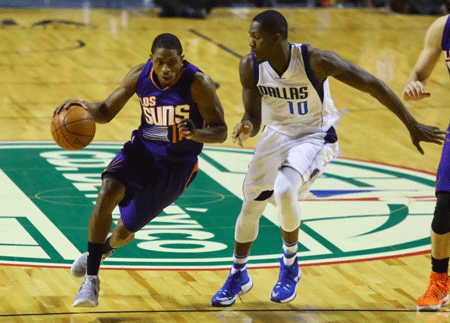Why sports are the biggest game in media
This year the media rights for the NBA will come up for auction: will the big tech companies scoop them up? If so, what does that mean for the whole media ecosystem, both today and when the NFL rights come up after the 2033 season? Center director Jeffrey Cole explores the issue.
By Jeffrey Cole
Barbenheimer was an aberration — a lucky one, but a unicorn. It succeeded brilliantly because it emerged virally, not as the product of a studio marketing campaign. But there are no lessons to learn other than that people will flock to the theater to see original movies that appeal to them.
 Little else in theatrical is working at the moment. With the extraordinary exception of Netflix, which did everything right, streaming has yet to find an economic model that works. Prices have risen. Advertising is now part of the basic tiers, but only Netflix has figured out a path to profitability. Consolidation is coming. Six years ago, I predicted that households will pay for 2.5 streamers, not seven. The jury is still out.
Little else in theatrical is working at the moment. With the extraordinary exception of Netflix, which did everything right, streaming has yet to find an economic model that works. Prices have risen. Advertising is now part of the basic tiers, but only Netflix has figured out a path to profitability. Consolidation is coming. Six years ago, I predicted that households will pay for 2.5 streamers, not seven. The jury is still out.
Cable is losing 20,000 subscribers a day, and broadcast television is entering its final phase.
What is working is sports, the only content that consistently attracts what advertisers crave: large and live audiences. This year’s Super Bowl was the highest rated program in U.S. television history. Of the top thirty programs of all time, twenty-nine are Super Bowls. February’s game between the 49ers and Chiefs was guaranteed to be in the top five. What made the difference and moved it into number one was the addition of Taylor Swift’s fans, some of whom watched a Super Bowl for the first time.
Sports have become so valuable to platforms and advertisers that the costs of those rights have shot into the stratosphere.
In years past, networks and cable companies only competed against each other for those rights. Now, as we’ve seen with Amazon’s Thursday Night Football and Sunday Ticket on YouTube, it’s the trillion-dollar tech companies that want those games for their streamers (Apple TV+, Amazon Prime, and YouTube). These are the richest companies in the world.
Rupert Murdoch realized Fox could not compete against the tech giants in entertainment, so he got out early when valuations were still high and sold Fox Entertainment to Disney for $71 billion.
Now the Murdochs are facing the same threat to one part of the empire they did not sell, Fox Sports. (They also kept Fox News.) Even with Murdoch’s vaults filled with Disney money, Fox cannot compete against the tech giants.
This is why the broadcast networks are declining. Without sports, there is little left of value on their channels. Entertainment shows are hugely expensive to produce. The networks are replacing many (soon to be most) with less expensive, and less appealing, reality TV. It is a death spiral.
Raptor
The chaos and fear around losing sports rights is what has led Disney (ESPN) to join forces with Warner Discovery (Turner and Max), and Fox Sports to create a three-headed sports colossus that might be able to compete against Silicon Valley (and Seattle).
There’s a great resemblance to the original 2007 vision for Hulu—three broadcast networks combining their shows to compete in streaming. Some people are referring to this new initiative, with the working title Raptor, as Spulu. The details, especially the monthly costs to consumers, are sketchy. Will each company put its best sports events into Raptor? It will have to cost a minimum of $30 a month. It’s more likely to have an announced cost closer to $50.
Raptor will change the entire equation of what households will tolerate as a monthly cost for sports and entertainment content. More on Raptor (and its final name, although I like the working one) as details emerge.
Football
Unlike most of the entertainment industry today, sports programming is firing on all cylinders. The NFL sits at the top of the pyramid. In an average year, eighty-four of the top one hundred programs on television are NFL games. Each game is an event (unlike baseball).
In what may be their last brilliant network move, several years ago the broadcast networks collectively recognized the unique value of the NFL and tied up many of those rights until 2033. In nine years, the dam will break. All NFL rights will be on the auction block. Only the rich will win.
Of all the billions spent in America on sports rights, 50 percent goes to the NFL. This is extraordinary. I was recently at the NFL headquarters in New York. I accidentally bumped into a drawer and billion-dollar bills fell out!
It will take to the end of the NFL contracts in nine years for all the relationships to reset based on who can pay most. But this year will be the most important one yet in the transition of sports programming from traditional media to tech companies.
Basketball
Second on the list of sports rights is the NBA, which gets 10 percent of sports media spend and is a colossus of its own. The NBA rights expire at the end of this year. The negotiations will begin soon, and they will be an important preview of what is to come in nine years with the NFL.
Basketball rights are hugely undervalued, but that is about to change.
The contest for NBA rights will reveal what the market value for sports is today with the entry of the new tech players. Some say bids for the NBA games may be two or even three times what they are currently. This already places the rights out of reach for many of the incumbents. Basketball rights could even go to five times or eight times today’s cost, which would be chaos .
Sports have become so valuable to platforms and advertisers that the costs of those rights have shot into the stratosphere. In years past, networks and cable companies only competed against each other for those rights. Now, as we’ve seen with Amazon’s Thursday Night Football and Sunday Ticket on YouTube, it’s the trillion-dollar tech companies that want those games for their streamers (Apple TV+, Amazon Prime, and YouTube). These are the richest companies in the world.
Back when he was retiring as Microsoft CEO, Steve Ballmer wanted to buy a sports team. Seeing that as his next career, he moved quickly when a team in the second biggest market, Los Angeles, became available (this rarely happens).
Ballmer had the cash and the desire to get the team. To make sure no one beat him to the Clippers, he paid $2 billion, which was about twice what the team was valued at. He got the team and became the most popular man among all team owners for dramatically raising the value of franchises in all sports.
It worked out well for Ballmer. His team is worth twice what he paid, and his personal worth has doubled since the deal.
The same thing could happen in a bidding war for NBA rights.
The big question is what the tech companies will do. So far, their moves into entertainment have been rounding errors for their bottom lines.
It is unclear what their ultimate entertainment strategies are. They could spend $20-25 billion each year on content, eclipsing Netflix, or they could buy the biggest studios. Amazon has already bought one of the smallest by purchasing MGM. Analysts have predicted for years that Apple could buy Disney. Google, Microsoft, Amazon, and now Nvidia, could buy any of the others.
Will the tech companies modestly spend for NBA rights, or will they open their checkbooks wide and bid for everything? Adam Silver, the NBA Commissioner, will keep some games for broadcast and cable for political reasons. Everything else is on the table.
This is the year we learn whether the tech companies are dabbling in sports and entertainment or if those industries are part of their long-term strategies.
What happens with NBA rights will be the biggest media story of the year. How it plays out will send a signal about how long the broadcast and cable networks may survive.
It could re-arrange everything in media and entertainment and create a new order.
____________

Jeffrey Cole is the founder and director of The Center for the Digital Future at USC Annenberg.
See all columns from the center.
March 6, 2024

